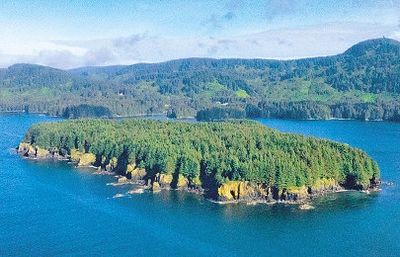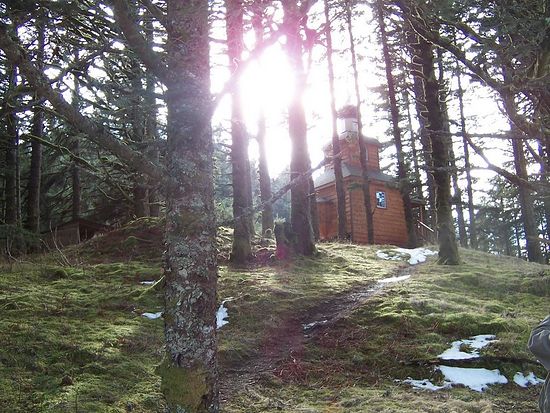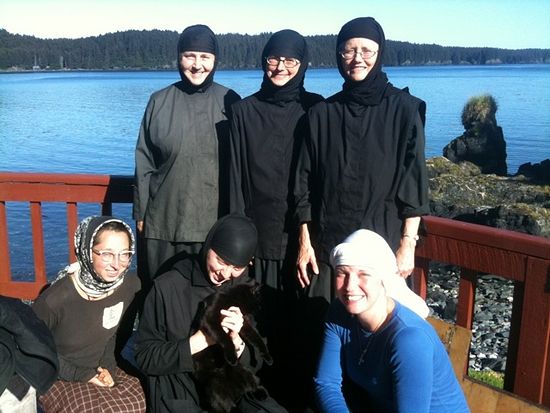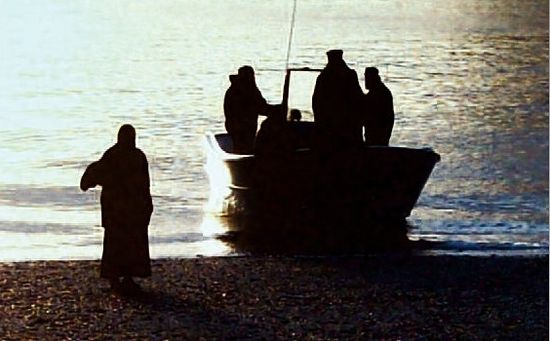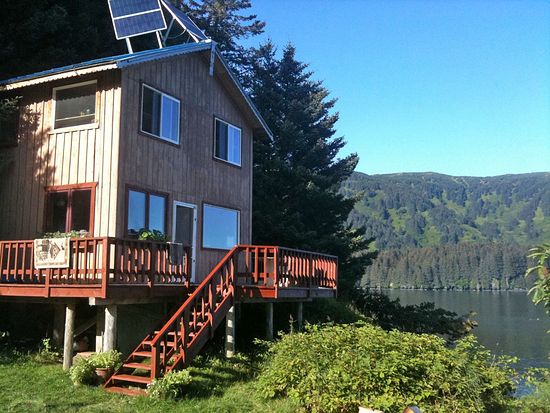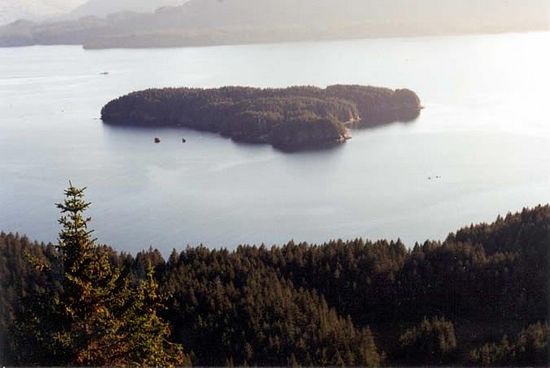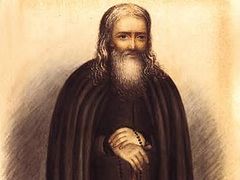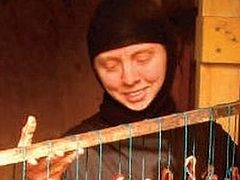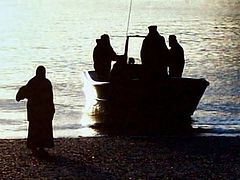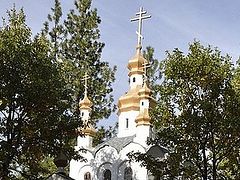Living in solitude, I occupy myself with searching the spiritual writings: above all I search the Lord’s commandments and their commentaries, and the Apostolic traditions; then the Lives and Instructions of the Holy Fathers. I reflect on all this, and whatever I find after reflection to be God-pleasing and useful for my soul, I copy out for myself. In this is my life and breath.
St. Nilus of Sora
Nestled between Kodiak Island and St. Herman’s Spruce Island, amidst cold Alaskan waters, lies an emerald islet, forested by towering spruce trees, buffeted by powerful winds. A myriad of birds—eagles, swallows, warblers, seagulls—find refuge here, and colorful tufted puffins nest each summer in its craggy black cliffs. A large Orthodox cross stands above the main shore as one approaches the island by boat. Behind the trees is a wooden church modeled after the fifteenth-century Russian church of St. Nilus of Sora. On this tiny island live women who have dedicated their lives to God and seek to have a living communion with Him apart from distractions. Nearby is Monk’s Lagoon on Spruce Island where St. Herman of Alaska lived at the beginning of the nineteenth century. This beloved saint brought Holy Orthodox Christianity and monasticism to America in 1794 from Valaam Monastery in Northern Russia. Surrounded by the beauty of God’s creation and often cut off completely from the world by violent winter storms, conditions here are ideal for solitude. One is able to free oneself from the distractions of modern life and to cast the heart’s gaze inward, striving to seek God alone and to love Him above all.
The Monastic Way of Life
With St. Nilus as guide and patron, the nuns seek to emulate the monastic ideals of poverty, asceticism and interior prayer. Known for his extreme simplicity and voluntary poverty, St. Nilus emphasized the inner life of the monastic—the inward self-trial and practice of the Jesus Prayer. St. Nilus’ rule of life consists of two to twelve monastics living in cells clustered around the church—the skete form of monastic life. Called the royal path, it avoids both the trials of the large coenobitic monastery and the dangers inherent in the solitary life of the hermit. Each nun engages in her own intense inner warfare. The most necessary weapon is the unceasing repetition of the Jesus Prayer, “Lord Jesus Christ, have mercy on me.” She is striving, through prayer and spiritual reading, to imprint upon her soul an image of paradisal beauty and attain purity of heart. Monastic common life is based on the Lord’s commandments and the monastic principles of obedience, humility, love, and the cutting off of one’s own will, striving always to respond with “forgive me” and “bless.”
Rhythm of Life on St. Nilus Island
Life at St. Nilus Skete is ordered around the church services, the feasts and fasts, and a life of prayer. The sisters arise in the middle of the night for their solitary prayer vigil and then gather in church for Matins. Mornings are usually occupied with quiet activity, such as handwork. According to ancient monastic practice, the nuns strive to support themselves by the labor of their own hands—primarily through making prayer ropes. At noon, the main meal is served, followed by common obediences. After the service of Ninth Hour, Vespers and Compline, the nuns silently retire to their cells for spiritual reading, prayer and rest.
A rhythm of life has emerged in accordance with the seasons of the year, as well as with the physical demands of living in a remote wilderness. During Great Lent, the sisters devote themselves to prayer and fasting with few distractions. The welcome return of many forest songbirds heralds spring. Garden preparations begin, and in May carefully tended seedlings are transplanted. At the end of spring red salmon begin returning to their spawning grounds, and the fishing net is set. All are busy cleaning, filleting, smoking and canning the yearly supply of fish.
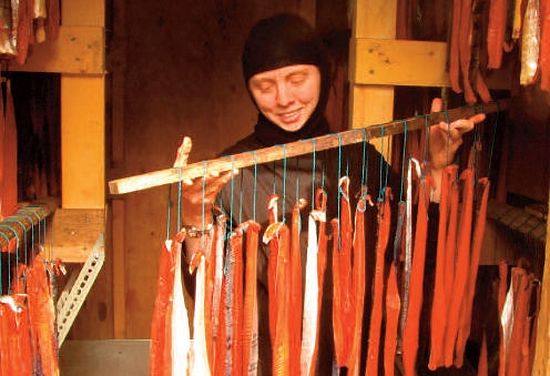
The sisters pick salmonberries, blueberries and currants in the summer months and gather edible wild mushrooms for drying. In late summer, the big silver salmon return and the attention is once again on fishing. This is also the time to be sure that the wood shed is full of a winter supply of wood.
Pilgrims come throughout the warmer months—when the seas are calmer and daylight hours are longer—to venerate St. Herman, praying at his grave and drinking from his holy spring on Spruce Island. Hospitality is offered by the sisters, and St. Sergius guesthouse, a large one-room cabin, is available for women pilgrims desiring to stay longer and who are undaunted by the rustic conditions.
Travel by sea becomes more difficult as early as September due to stormy weather. The focus turns inward as outdoor activity becomes more limited. Winter brings the opportunity for quiet, indoor obediences and treasured time for prayer, study and contemplation.
St. Nilus Skete is under the jurisdiction of His Grace Bishop Maxim of the Western American Diocese of the Serbian Orthodox Church.

